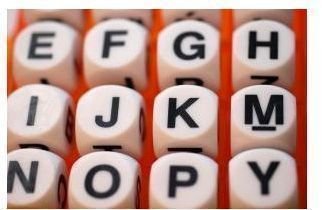How to Make a Scramble Word Puzzle: Using Your Desktop Publishing Software
Creating Scrambled Word Puzzles
One of the most simple games you can create is a basic unscramble or anagram puzzle, where the reader has to rearrange letters in
order to make a word or phrase. An easy way to jumble up letters is to use an online tool such as https://kryptech.name/letterjumbler.asp, which will rearrange the letters into random collections. If you want your clues to be something other than random collections of letters, you can try using online anagram finders, such as the one at https://wordsmith.org/anagram/. These compare your letters to a dictionary and try to find proper words or phrases. Not all words make for good anagrams, however, so you may have to use the random-letter option.
When laying out an unscramble puzzle like this, make sure you provide spaces for the reader to fill in the proper word, ideally adjacent to the clue. As these puzzles usually have several words or phrases to unscramble, try linking them with a common theme, such as sports or the beach. Adding some clip art will help unify all the elements.
Another popular scrambled word puzzle is the Jumble or Wordsearch. You can make a scramble word puzzle here for readers to pick out a list of words from a large grid of letters. Again, these words are usually connected by a theme or topic. Wordsearch jumbles are easy to create in DTP software once you learn the basics.
Here’s How:
First, lay down a table with an equal number of rows and columns and set the cell height and width to equal dimensions. This makes a square grid into which you will add your letters. Make sure that each cell can display a single letter in the font you have chosen (it’s best to use a bold face in capital letters) and check that it can contain contain wider letters such as “W”. Select all cells and set the horizontal and vertical justification to “Middle”. You should also set the frame borders to display only on the outer edge of the table, not between each cell, as this will allow your reader to circle the words as they find them.
Now add the words that your readers will have to find. Add one letter per cell to make words that run along horizontal, vertical, or diagonal lines. Once all your words have been added, copy and paste the entire table into a new frame. Keep one of these copies unmodified, as this will be your answer key. Add random letters to the blank spaces of the other copy in order to hide your puzzle words. When all the spaces are filled, you have your finished puzzle.

Once you have completed a few puzzles like these, you can start experimenting with your own ideas. You could combine anagrams into a wordsearch, or use unscrambled words to give clues to a final word or phrase. Whatever you choose to do, make sure you give clear instructions to your readers and always provide them with the answers (although they should be on a different page from the puzzle or, at the very least, printed upside down to discourage people from peeking).
Image Credit: sxc.hu, cubes, by hisks, and sxc.hu, the end-1, by hisks
